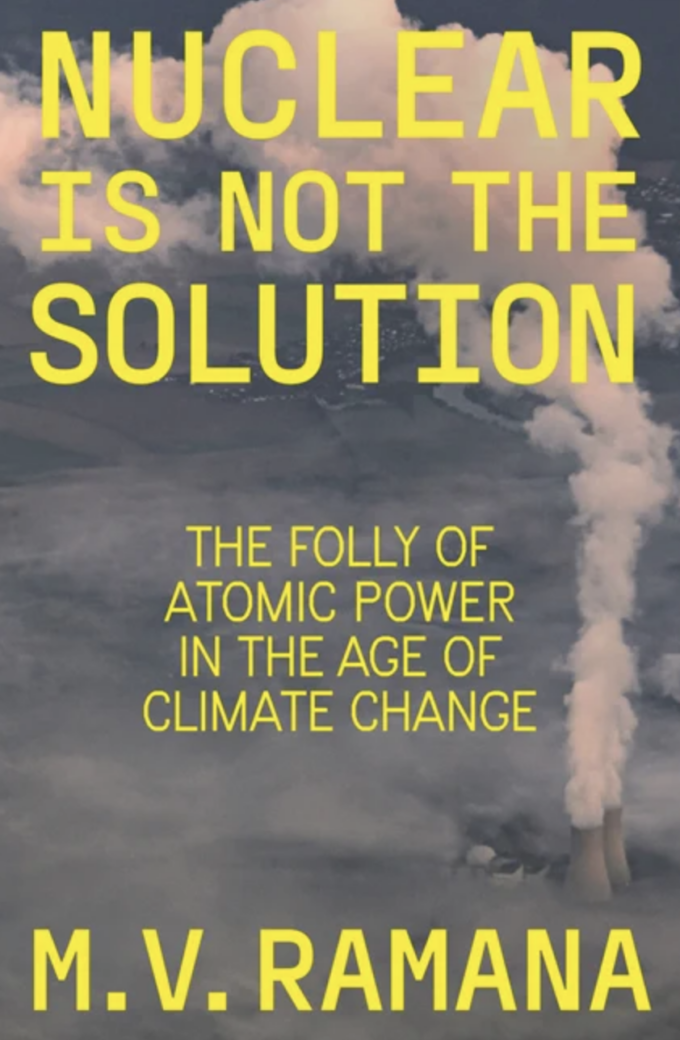Iraq has failed to meet all but three of 18 congressionally mandated benchmarks for political and military progress, according to a draft of a Government Accountability Office report.
"While the Baghdad security plan was intended to reduce sectarian violence, U.S. agencies differ on whether such violence has been reduced," it states. While there have been fewer attacks against U.S. forces, it notes, the number of attacks against Iraqi civilians remains unchanged. It also finds that "the capabilities of Iraqi security forces have not improved." "Overall," the report concludes, "key legislation has not been passed, violence remains high, and it is unclear whether the Iraqi government will spend $10 billion in reconstruction funds," as promised.
Iraq needs $100-150 bln for reconstruction: Finance ministerAMMAN (Reuters) - Iraq needs at least $100 billion to rebuild its shattered infrastructure after four years of violence and lawlessness following the U.S.-led invasion of 2003, Finance Minister Bayan Jabor said on Monday.
"The country is devastated and we are in need of at least $100 billion to $150 billion to restore infrastructure -- from sewerage to water to electricity to bridges and basic needs of the country," he told Reuters in Amman.
He said about $4 billion had been spent on infrastructure projects so far this year, more than in all of 2006, when internal violence and the limited capacity of the Iraqi private sector meant only about 40 percent of $6 billion allocated in the budget was used.
"What happened last year was ... a failure in the government's ability to execute," Jabor said.
Health and humanitarian crisis in Iraq
The billions of dollars planned for reconstruction are going unspent as the situation on the ground has spelled suspension for reconstruction efforts. While the coalition forces had not predicted the downward spiral that ensued - predicting a peaceful transition from one regime to another - investments have been mainly made in reconstruction efforts and in comparison, next to nothing, has been set aside for humanitarian assistance.
Special Inspector General for Iraq Reconstruction
July 30, 2007 Quarterly and Semiannual Report to Congress (Highlights, All Sections and Appendices)
Asset Transfer
SIGIR produced another audit on the asset-transfer process,
looking at how completed projects are transferred to
Iraqi control. During the course of the audit, SIGIR found
that the Government of Iraq (GOI) has failed to accept a
single U.S.-constructed project since July 2006. Although
local Iraqi officials have accepted projects, the national
government has not. Moreover, SIGIR learned that the U.S.
government is unilaterally transferring projects to Iraq. The
failure of the asset-transfer program raises concerns about
the continuing operation and maintenance of U.S.-constructed
projects.First Focused Financial Review
Anti corruption
This quarter, SIGIR completed the first in a series of
focused financial reviews of large contracts funded by
the Iraq Relief and Reconstruction Fund (IRRF). These
reviews will meet the “forensic audit” requirement
that the Congress imposed upon SIGIR last December
through the Iraq Reconstruction Accountability Act of
2006.
This initial review examined the work performed
by Bechtel under its Phase II IRRF contract. SIGIR’s
findings from the Bechtel audit are emblematic of
the many challenges faced by contractors in the Iraq
reconstruction program, including insufficient oversight,
descoping, project cancellations, cost overruns,
and significant delays in completing projects. SIGIR has
announced the next round of focused financial reviews,
which will audit the largest contracts in the Iraq reconstruction
program over the next year.
The Embassy made progress on several fronts to address the endemic corruption in Iraq, which SIGIR views as a “second insurgency.” This quarter saw the inception of the Iraqi-created Joint Anti-Corruption Council (JACC), comprising the three main anticorruption organizations in Iraq, as well as other governmental representatives. A SIGIR audit this quarter identified continuing challenges to the implementation of a coherent anticorruption effort, including the absence of a program manager with the authority to coordinate the overall anticorruption effort and the lack of a comprehensive plan that ties anti corruption programs to the U.S. Embassy’s Iraq strategy.
Officer overseeing Iraq reconstruction projects urges patienceBrig. Gen. Michael J. Walsh, commander of the Corps of Engineers' Gulf Region Division in Baghdad since Oct. 14, 2006, is responsible for overseeing the bulk of U.S.-funded reconstruction projects in Iraq. Earlier this summer, Government Executive senior correspondent Katherine McIntire Peters interviewed Walsh when he was in Washington during a brief leave from Iraq. The following is an edited transcript:
Q: You've been in Iraq more than eight months now. How have things gone with reconstruction during that time?
A: The security issue had an impact on about 12 percent of our projects when I got there, and now it's up to about 19 percent. Certainly part of the requirements in building, whether in the United States or Iraq, is to make sure you get the skilled labor, the equipment and the materials you need. In Iraq, you also need to make sure the security piece is taken care of, and then make sure the politics are OK with the local tribes and the provincial leadership. If any one of those four or five things is not in alignment, then you have to slow down or stop a project.
About 60 percent of our contracts are now with Iraqi firms. If an Iraqi principal or an Iraqi senior worker receives a cell phone call threatening him or his wife, he may not come to work. That's what we call an impact to the construction schedule. There also have been some attacks on particular project sites. Some small percentage have been damaged beyond repair. So far, we've completed 3,200 projects. I would say probably less than 1 percent of those have been destroyed. It's a very small percentage.
Troops Confront Waste In Iraq Reconstruction
Maj. Craig Whiteside's anger grew as he walked through the sprawling school where U.S. military commanders had invested money and hope. Portions of the workshop's ceiling were cracked or curved. The cafeteria floor had a gaping hole and concrete chunks. The auditorium was unfinished, with cracked floors and poorly painted walls peppered with holes.Whiteside blamed the school director for not monitoring the renovation. The director retorted that the military should have had better oversight. The contract shows the Iraqi contractor was paid $679,000.
Americans who report Iraq corruption pay a priceCorruption has long plagued Iraq's reconstruction. Congress approved more than $30 billion to rebuild Iraq, and at least $8.8 billion of it has disappeared, according to a government reconstruction audit.
Yet there are no noble outcomes for those who have blown the whistle, according to a review of such cases by The Associated Press.
William Weaver, a professor of political science at the University of Texas-El Paso and a senior adviser to the National Security Whistleblowers Coalition, said, "If you do it, you will be destroyed."
Investigating an Outsourced War
The United States government detained Donald Vance just outside Baghdad for 97 days. They hooded him, interrogated him ruthlessly, and blasted his cell with heavy metal music. He was accused of selling weapons to terrorists. His real crime appears to be telling the FBI about corrupt contracting practices in Iraq. Vance is among a select group of state enemies: whistleblowers.
We know this because of an Associated Press story that uncovered Vance’s ordeal. Vance, suspicious that the contractor he worked for was supplying weapons to insurgents, started supplying information to the FBI back in the States. But he was soon detained by Army Special Forces and brought to Camp Cropper for his 97-day stay.
The story also reported the fate of other whistleblowers who have tried to halt the massive boondoggles still ongoing in Iraq: they have been “vilified, fired, and demoted.”
Bunnatine Greenhouse, a high-ranking civilian in the U.S. Army Corps of Engineers who testified about the corrupt practices of a Halliburton subsidiary now “sits in a tiny cubicle in a different department with very little to do and no decision-making authority, at the end of an otherwise exemplary 20-year career.” Julie McBride testified about the same Halliburton company’s cost exaggerations and skimming. What happened? “Halliburton placed me under guard and kept me in seclusion. My property was searched, and I was specifically told that I was not allowed to speak to any member of the U.S. military. I remained under guard until I was flown out of the country.”
Pentagon auditors investigating alleged Iraq contract fraud
Mike Rosen-Molina at 7:13 PM ET
[JURIST] The US Department of Defense will send an investigative team headed by Pentagon Inspector General Claude M. Kicklighter to Iraq to probe allegations of fraud and corruption related to military contracts, a DOD spokesman said Tuesday. The team will concentrate on incongruities concerning weapons and supplies bought by the US and intended for the use of Iraqi forces. As of last week, 73 criminal investigations were underway into contracts valued at more than $5 billion, Army spokesman Col. Dan Baggio said Monday; 20 military and civilian figures, including an officer who worked closely with Gen. David Petraeus , have already been indicted. The New York Times reported Tuesday that multiple federal agencies, including the Department of Justice and the Federal Bureau of Investigation, are conducting their own investigations into the matter.

The Rip-off in Iraq: You Will Not Believe How Low the War Profiteers Have Gone
Operation Iraqi Freedom, it turns out, was never a war against Saddam Hussein's Iraq. It was an invasion of the federal budget, and no occupying force in history has ever been this efficient. George W. Bush's war in the Mesopotamian desert was an experiment of sorts, a crude first take at his vision of a fully privatized American government. In Iraq the lines between essential government services and for-profit enterprises have been blurred to the point of absurdity -- to the point where wounded soldiers have to pay retail prices for fresh underwear, where modern-day chattel are imported from the Third World at slave wages to peel the potatoes we once assigned to grunts in KP, where private companies are guaranteed huge profits no matter how badly they fuck things up.
Humanitarian disillusionsOn August 28th, Al-Jazeera English broadcast a report that the Salvadorian contingent of the MNF-I will be renewed in Iraq, highlighting their “reconstruction and humanitarian assignment”. It’s not the first misuse of the humanitarian concept. Everyone is aware of the existence of Provincial Reconstruction Teams (PRTs) in Iraq and Afghanistan. Perhaps fewer people know that some Private Security Companies (PSCs), that are often compared to mercenary companies, justify their presence through “humanitarian” reasons.
For example, the British Aegis, well known in Iraq for the video broadcast by its personnel showing them firing at civilian vehicles with Elvis Presley as accompanying background music. As one of the largest PSC worldwide they have created the “Aegis Foundation”, which has been active across Iraq since 2004 and “has completed a wide range of projects assisting communities in urgent need, from providing clean drinking water for schools and inoculations against water-borne diseases to supplying hospitals and medical clinics with generators and essential equipment.” The International Peace Operation Association (IPOA), which, at the exact opposite of what its name suggest is a trade association of some of the most prominent PSC and has rules of engagement in its Code of Conduct, doesn’t hesitate to talk about the “benefits of military in humanitarian role” in its newsletter.
SEE:
Military Industrial Complex
The Cost of War
U.S. Supplies Iraqi Insurgents With Weapons
Surge Blackout
What He Didn't Say
Iraq; The War For Oil
Look In Your Own BackyardIraq Inspector General
Another Privatization Failure
Conservative Nanny State
Another Privatization Myth Busted
HalliburtonPrivatization of War
Privatization
Find blog posts, photos, events and more off-site about:
Iraq, contractor, privatization,
Bush, Wolfowitz, Rumsfeld, Cheney, USA, war, KBR, Halliburton
Corruption, Halliburton, Bechtel,
Politics, SOTU, State of the union, President Bush,
infaltion, recession, USeconomy, USA, economy, banks, war, costofwar, Iraq, Afghanistan, military, deficit, debt, Bush, WhiteHouse, economics, Halliburton, Bechtel,
Inspector-General, USA, Iraq, insurgency, Iran, IED, GAO, crony-capitalism, subsidies, war-profiteering, taxpayers,









.jpg?ext=.jpg) Duane Arnold pictured before its closure in 2020 (Image: NextEra Energy)
Duane Arnold pictured before its closure in 2020 (Image: NextEra Energy)